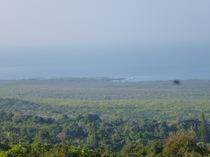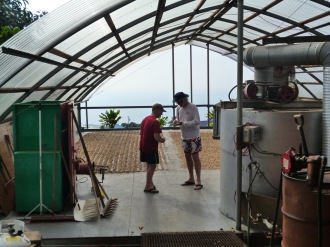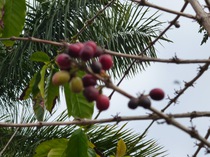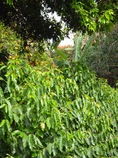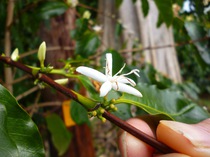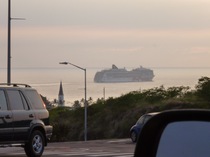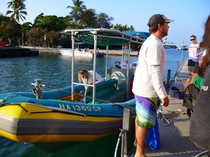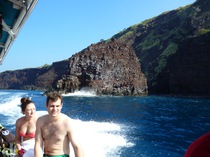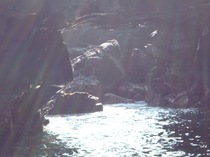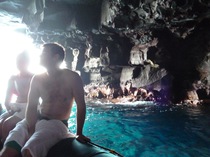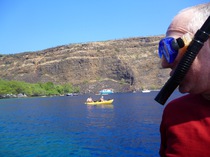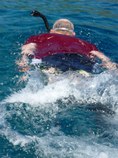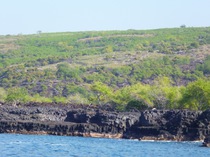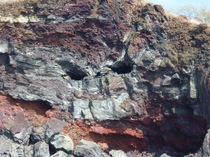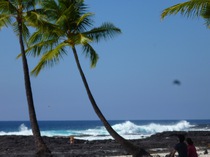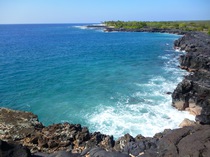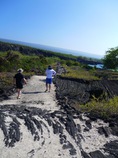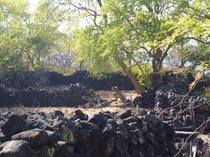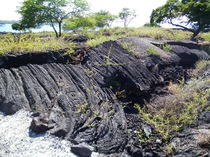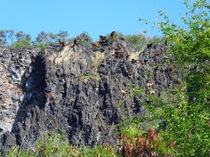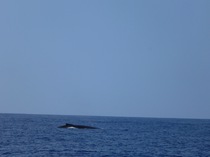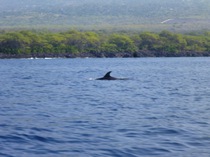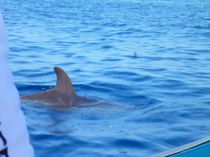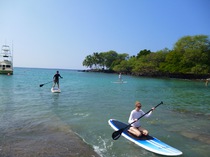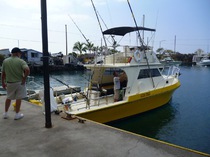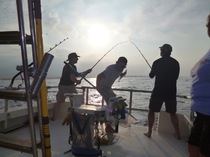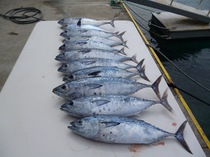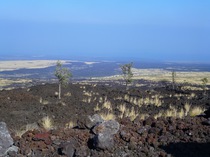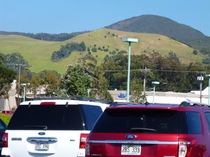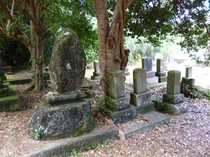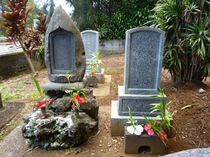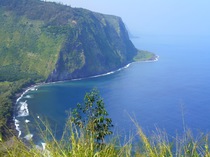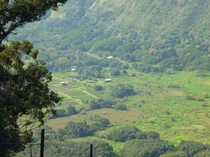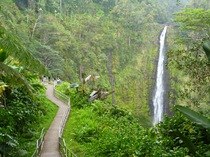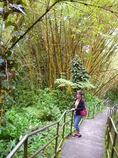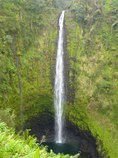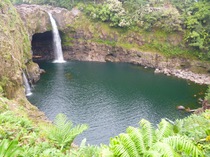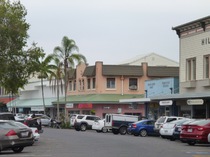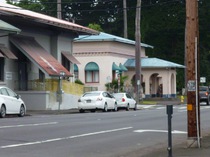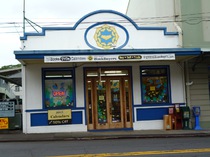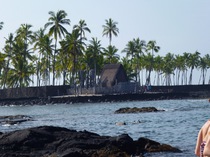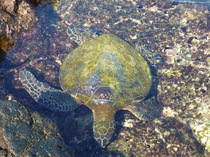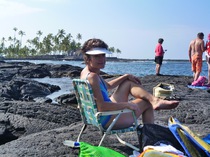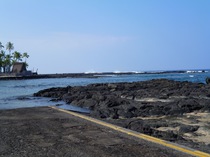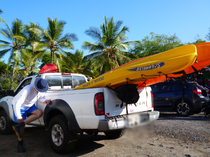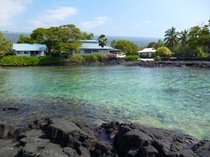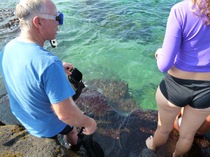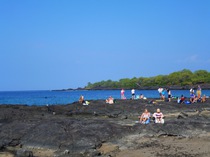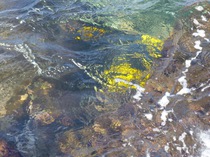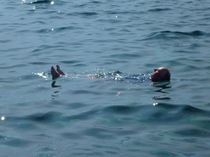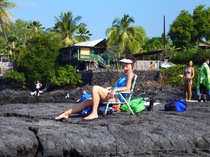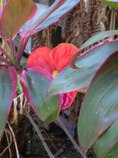
3211 Energy Lane, #403 Private sessions by appointment Also specializing in distance
Casper, Wyoming 82604 307-797-9677 sessions via phone or Skype
Our Hawaiian Vacation - Photos and Notes . . .
In January, my husband and I went to the Big Island and stayed with one of our oldest and dearest friends, who just happens to live on a small coffee/macadamia farm south of Kailua Kona. We'd been there before, and had visited the green and black sand beaches, South Point, Volcanos, Hawi and Pulolu, so this time we focused on being in and on the water every day - except for the one day on which we drove up over the middle of the island through cattle ranch country (the Parker Ranch HQ), past Mauna Kea, through the town of Waimea, over to the east side of the island, and down the Hamakua Coast to Hilo.
(If you're planning to visit there soon, I'll be happy to share what I know about the best activities, charters, things to see and places to eat, and give you the contact information for an excellent professional concierge.)
Below are photos and some commentary: You can single-click on any photo to see the full-size image and more detail.
No part of this page (images or text) may be copied by any method for any reason without permission.
Copyright © 2015 Cathy Hazel Adams
We woke up to every morning to the crowing of feral roosters, warm weather, and this view from our friend's back deck.
The finger of land at the center of the frame (with palm trees and waves) is the point of land that is Pu'uhonau O Honaunau - a National Historical Park that was once the king's private royal com-pound, and is now a wonderful public beach and world-class snorkel area, as well as a preserve for protected sea turtles. Sometimes I could see the "smoke" of humpback whales splashing about just beyond the point. Close up photos of Honaunau follow below.
We booked a snorkel raft trip with Sea Quest charters (highly recommended.) This was the "snorkel limo" that took us to 3 different premium snorkeling spots. Sea Quest provided all equipment, took excellent care of us, gave clear insructions and tips, and fed us snacks and a good deli lunch.
Captain Liam was also an excellent tour guide who knew where all the little inlets and sea caves were, and told a story of a whale coming right up under his boat and just staying there so her baby could swim around it and check it out. He knew his local history and that, when Mauna Kea gets snow, the locals drive up, load up their pickup beds with snow, then drive down and build snowmen on the beach.
One of our 3 snorkel spots was Kealakekua Bay, and it's gorgeous, world-class snorkeling: shallow, warm, crystal clear water; the bottom covered with corals, which are covered with feeding schools of colorful fish. Just beyond the boat is the great blue drop-off: the bottom there drops abruptly to 150 feet. This is the area and the drop-off used in Finding Nemo. A monument to Captain Cook stands onshore where he was killed by the Hawaiians.
My husband on the left, another fisherman on the right and Doug, the deck hand, keeping everything running smoothly. I got seasick that day for about an hour, but then I was fine and enjoyed the boat ride very much. My fellow passengers commented on how nice my coloring was compared to the green color I'd been.
We also went on a chartered night snorkel with giant manta rays. No photos of that, sorry - but a big shout out to Kamanu Charters, who provided a great experience. They take guests out on their big, smooth, stable catamaran to what is generally agreed to be the best place to see lots of manta rays (close to the shore right by Kona Intl'l Airport). Then they keep you safe and comfortable, provide wet suits so you don't get cold, and feed you snacks, with wine and beer. Nice people. Highly recommended. Even experienced divers love this one.
Our day on dry land:
Taken from the parking lot of Waimea town center. This is lovely, rolling green ranch country much like you'd see between Colorado Springs and Denver. The Parker Ranch surrounds the center and the ranch HQ is nearby. It's a great place to stop for lunch or dinner, or grab some supplies from their very excellent natural foods store, or nice local supermarket.
Hilo is a small city with a funky 1920's feel and all the young people wearing flip-flops and backpacks that you'd expect to see in a college town (the University of HI has a campus here). It also has all the cool shops, hole-in-the-wall cafes, and used bookstores you'd expect, plus at least one "Kava" bar (which I didn't expect).
And now, back to Honaunau - the shoreline visible from our friend's deck, where we spent so much of our time:
Pu'uhonua O Honaunau, or the City of Refuge, was the king's private compound. It's surrounded by an ancient lava rock wall, gorgeous stands of palm trees, fish ponds, and the king's private bathing pools. A tiny moon-shaped lagoon was once the private royal canoe landing, but is now a protected area for green sea turtles and part of a National Historical Park. Visitors can walk around the sandy beach but are not allowed to be closer than 20 feet to the turtles that come there to rest.
One turtle seemed to prefer a tidal pool on the "people" side of the lagoon. She'd feed for an hour or so in the tidal pool (hence this photo - she's under-water), then slip out into the sea to feed along the lava walls, giving snorkelers there something to see and talk about.
Then she'd wash back into the pool and hang out there for a while.
Pu'uhonua O Honaunau - looking from the cement pier where small motorized craft and kayaks put into the lagoon. In the background is the ancient royal compound, with its lava rock walls, temple and bathing pools.
We went kayaking twice around the rocky point and south to the inlet below the Park. (I found it a little scary the first time we paddled away from shore and into the ocean swells. The second time I knew what to expect, so it was great fun.)
Honaunau is called by the locals "Two Step" and these are the actual "two steps" - a place where the lava is naturally layered into steps that make it easy to enter and climb out of the water. (You launch from the steps into water that is about 6 feet deep and goes right away to maybe 10, then 15 and 25-30 feet in short order. Then it drops to abyss depths in the middle of the inlet.)
The "steps" are pocked with small holes that would be perfect finger holes if they weren't occupied by spiny sea urchins!
This is the view looking across the inlet to the other side - the deep blue depths start about half way across. We've had wild spinner dolphins come up to swim with us here, and on this trip saw a giant whale shark out there. (We weren't out there with it, but maybe that's not a bad thing - I'm not sure how I'd have felt!)
